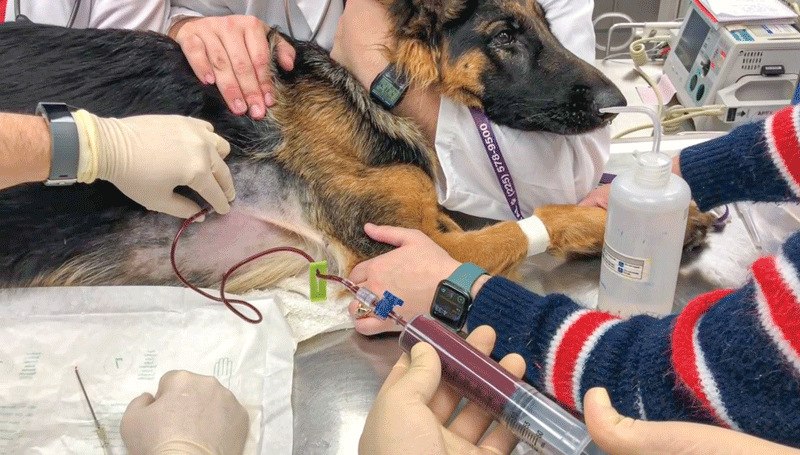When a young German shepherd arrived at the emergency room with a life-threatening hemothorax due to anticoagulant rodenticide poisoning, the veterinary team faced a critical decision. With limited access to donor blood and the high costs associated with blood products, they opted for an innovative, lifesaving procedure known as autotransfusion.
Autotransfusion is not just a medical procedure; it’s a race against time to save lives using the patient’s own blood. This method is particularly valuable in veterinary medicine where the availability of blood products can be scarce and expensive. By reinfusing a patient’s own blood, veterinarians can avoid the risks associated with donor blood, such as disease transmission and compatibility issues.
The process begins in the emergency setting, where rapid action is crucial. For animals suffering from conditions like traumatic injuries, anticoagulant poisoning, or bleeding tumors, every moment counts. These conditions often lead to hemorrhagic shock, a severe state where decreased blood volume and red blood cells compromise oxygen delivery to tissues, threatening the animal’s life.
In the case of our German shepherd, the veterinary team swiftly moved to collect the blood accumulating in his chest cavity. This blood, still warm and full of vital oxygen-carrying red cells, was immediately reinfused, bypassing the need for external warming and reducing the risk of hypothermia.
One of the significant advantages of autotransfusion is the elimination of the need for anticoagulants typically used in stored blood. This not only simplifies the procedure but also reduces the risk of complications like citrate toxicity, which can occur when the anticoagulant citrate binds to calcium and magnesium in the body.
However, autotransfusion isn’t suitable for all patients. The ideal candidate is one who is unstable despite initial fluid therapy and has a clean source of blood available—free from contamination by bacteria, urine, fecal matter, or bile. In cases where the blood is contaminated or there’s a risk of cancer cells within the blood, traditional donor blood transfusions are necessary.
The technique itself is straightforward yet requires meticulous attention to sterility and precision. In the emergency room, the area for needle insertion is carefully prepared to prevent infection. Using specialized equipment like a three-way stopcock and sterile syringes, the blood is drawn from the affected cavity, filtered, and then administered directly back into the patient’s bloodstream.
For more complex cases, such as during surgeries, blood can be collected and processed using cell salvage devices, although these are less common in veterinary practices. Alternatively, a simple two-syringe technique can be employed to transfer and reinfuse the blood efficiently.
Despite its benefits, autotransfusion is not without risks. Complications can include hemolysis (destruction of red blood cells), coagulation disorders, and microembolisms. However, these risks are generally lower compared to those associated with allogenic transfusions (using donor blood).
The successful autotransfusion of our German shepherd not only stabilized his condition but also highlighted the effectiveness of this procedure as a critical tool in emergency veterinary medicine. It underscores the importance of innovative approaches in the face of resource constraints, offering a lifeline to our beloved pets when they need it most.
Autotransfusion represents a blend of quick thinking, medical knowledge, and the innovative use of available resources, proving that in critical care, adaptability and ingenuity can save lives.



